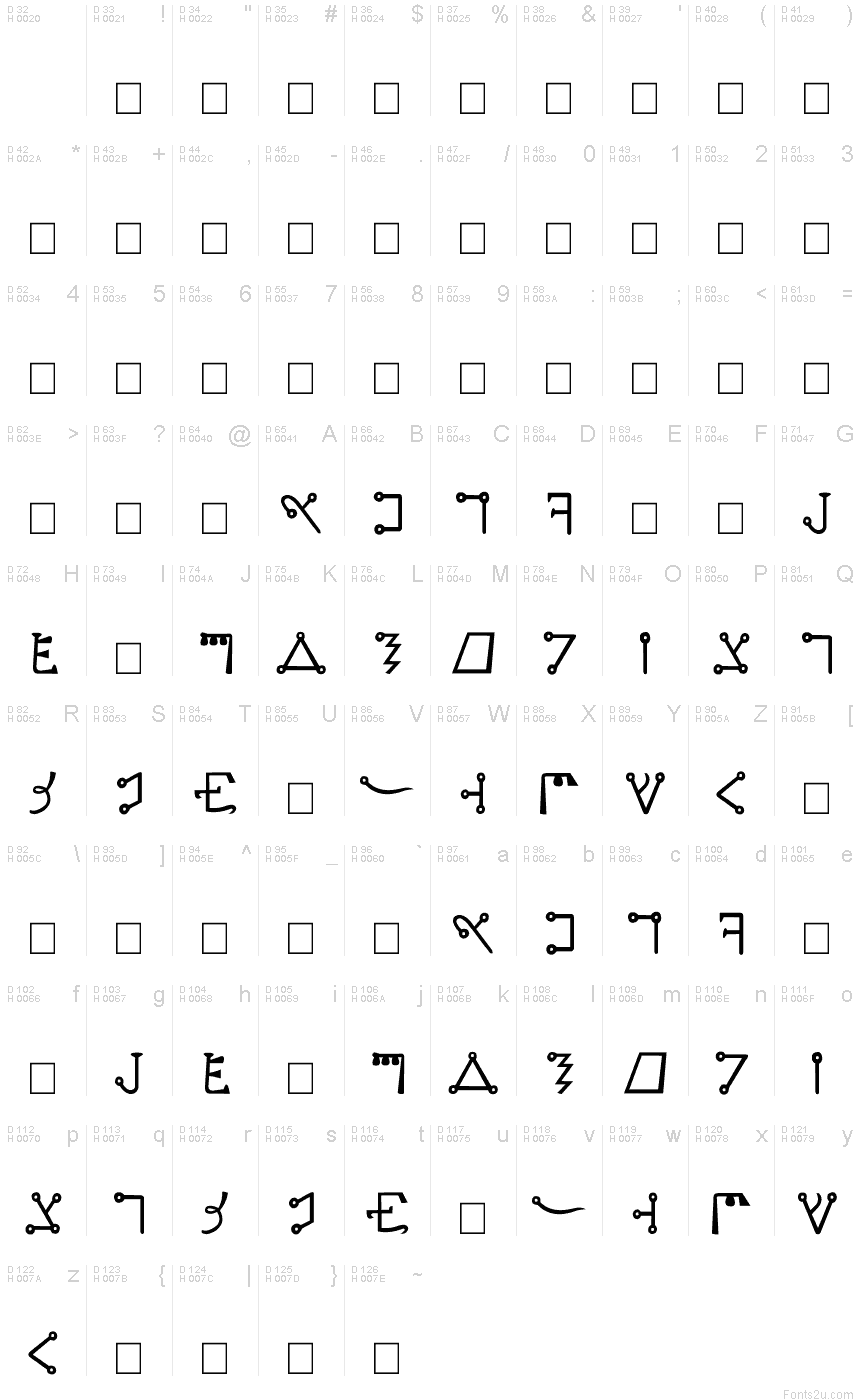Passage du Fleuve
TrueTypeДля личного пользования
- Ударения (частичные)
- Евро
Passage-du-Fleuve.ttf
Теги
Таблица символов
Для просмотра различных таблиц символов, содержащихся в этом шрифте, пожалуйста, используйте раскрывающееся меню.

Основная информация о шрифте
О авторских правах
© 2002 Daniel U. Thibault. All Rights Reserved.
Шрифтовая семья
Passage du Fleuve
Шрифтовая подсемья
Regular
Уникальная подсемейная идентификация
Urhixidur:Passage du Fleuve Regular:2002
Полное имя шрифта
Passage du Fleuve
Имя настольной версии
Version 1.00; 2002 August 28
Имя поскрипт шрифта
Passage_du_Fleuve
О производителе
Дизайнер
Daniel U. Thibault
Описание
Passage du Fleuve 2002 1.00
A medieval (circa XIIth-XVth century) occult script derived from Hebrew. The French name means "Passing the River" and is probably an allusion to Deuteronomy, Chapter II, Verses 13-16, where Moses leads Israel across the river Zered into Canaan. With the Celestial and Malachim/Angelic/Royal scripts, it forms the Seraphic family of scripts. It is currently used by some Wiccan practitioners.
Passage du Fleuve is included by Heinrich Cornelius Agrippa in Book III (Ceremonial Magic), Chapter XXX («Another manner of making Characters, delivered by Cabalists») of his De Occulta Philosophia (written in 1509 and first printed in 1533), unfortunately without mentioning any details. Francis Barrett derived the alphabet from Agrippa, along with much of the text of Agrippa's book, and presented it in his «The Magus: A Complete System of Occult Philosophy», published in 1801.
A medieval (circa XIIth-XVth century) occult script derived from Hebrew. The French name means "Passing the River" and is probably an allusion to Deuteronomy, Chapter II, Verses 13-16, where Moses leads Israel across the river Zered into Canaan. With the Celestial and Malachim/Angelic/Royal scripts, it forms the Seraphic family of scripts. It is currently used by some Wiccan practitioners.
Passage du Fleuve is included by Heinrich Cornelius Agrippa in Book III (Ceremonial Magic), Chapter XXX («Another manner of making Characters, delivered by Cabalists») of his De Occulta Philosophia (written in 1509 and first printed in 1533), unfortunately without mentioning any details. Francis Barrett derived the alphabet from Agrippa, along with much of the text of Agrippa's book, and presented it in his «The Magus: A Complete System of Occult Philosophy», published in 1801.
Дополнительная информация о шрифте
Поддерживаемые платформы
ПлатформаКодировка
ЮникодЮникод 1.0 семантика
MacintoshЛатинская
MicrosoftТолько BMP юникод
Детали шрифта
Создан2002-08-17
Просмотр1
Количество глифов248
Единиц на Em2048
Права внедренияPазрешено внедрение для редактирования
Класс семействаСимвольные
НасыщенностьСредний (нормалный)
ШиринаСредний (нормальный)
Mac стильЖирные
НаправлениеГлифы направленные слева направо + нейтральные
УзорPегулярный
ВысотаНе моноширинный